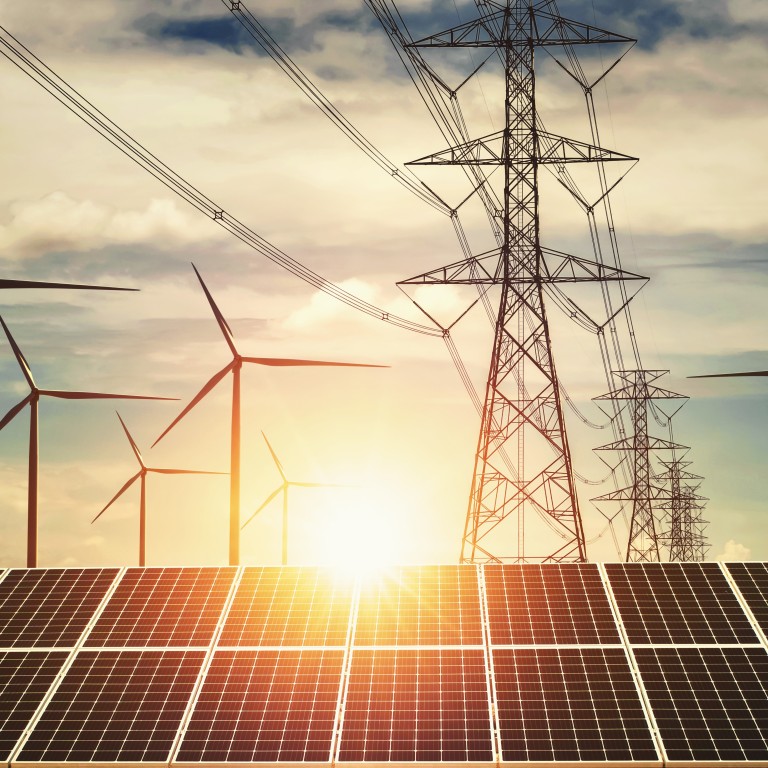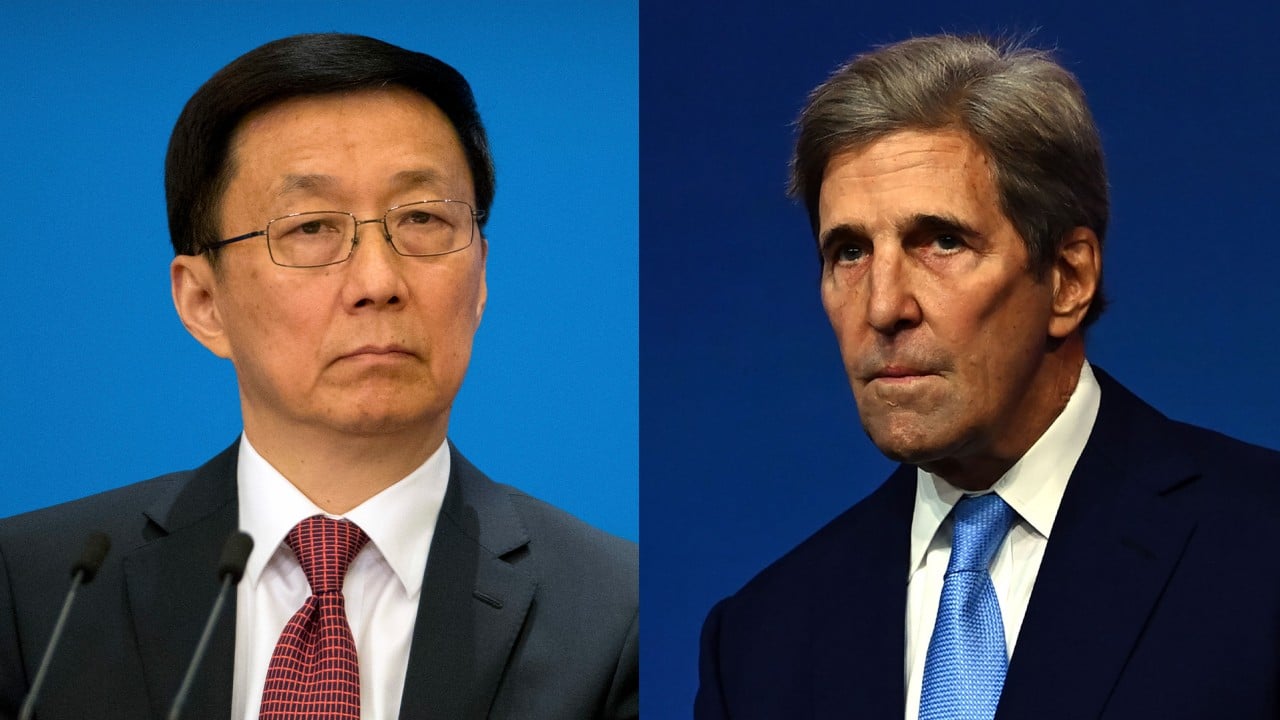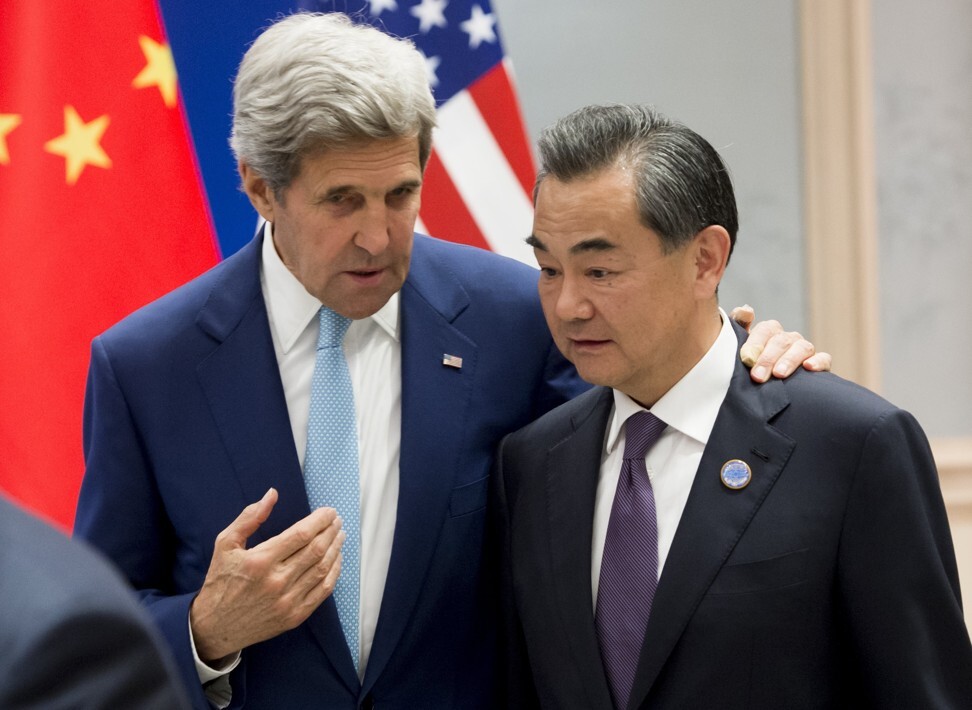
In brokering US-China climate cooperation, Xie Zhenhua and John Kerry deserve much credit
- In 2014, Xie Zhenhua and John Kerry worked on a US-China climate statement and rallied others to sign the Paris Agreement
- The two sides have identified the many areas where collaboration is desirable and important, including on emerging technologies
China and the United States are keeping the door open for further cooperation that could include technology, industry, trade and more – albeit packaged under the urgent need to tackle climate change.
These include power generation, energy storage, grid reliability, carbon capture, green hydrogen, renewable energy deployment, green agriculture, energy-efficient buildings, low-carbon transport, as well as aviation and shipping.
The two sides have identified the many areas where cooperation is desirable and important for the world’s two biggest greenhouse gas emitters. These areas include emerging technologies, such as in batteries, carbon capture and zero-carbon fuels where Sino-US collaboration could greatly advance research, development, finance and deployment worldwide.
The pace of cooperation has picked up, and more could be expected this year.

01:57
US, China put aside differences for pledge to work together on climate change
To get there, the US will need to deploy more renewable energy sources, such as solar and wind power, to generate electricity, develop battery technologies for storage, and generate new fuels to replace petroleum products for vehicles.
Many mutually beneficial deals could be made soon. For example, China could provide the US with large quantities of solar panels at reasonable prices while the US could sell massive quantities of natural gas to China.

03:27
World leaders pledge to cut greenhouse emissions at virtual Earth Day summit
They could also find areas of collaboration in research and development that satisfy the US narrative of “compete and cooperate” when it comes to China.

They are not only well-respected and experienced climate negotiators, who are knowledgeable and passionate about tackling the climate crisis seriously and urgently, but they also understand they have an opportunity to bring their countries together when relations have gone off the rails.
They have worked successfully together before. In 2014, they got their respective governments to commit to decarbonisation goals and rallied other countries to sign the Paris Agreement in 2015 under the UN Framework Convention on Climate Change.

This means Xie and Kerry will have to be very hardworking diplomats in coaxing other governments to step up their efforts. They will emphasise the need to limit the global temperature rise to 1.5 degrees according to the latest scientific consensus.
US and China cannot ignore vulnerable countries in climate change fight
The Shanghai joint statement contains other far-reaching efforts, too.
China and the US will push for international investment and finance to support decarbonisation. The Paris Agreement has a provision to raise money to support climate action in developing countries, which has yet to be fully met, including by the US.
In addition, the joint statement provides that China and the US will cut their production and consumption of hydrofluorocarbon (HFCs), a powerful greenhouse gas, as required under the Kigali Amendment to the Montreal Protocol.
The amendment requires signatories to cut HFCs by more than 80 per cent over the next 30 years. So far, 118 countries have ratified it, and it is only now that China and the US have signalled that they will too. The impact of the amendment is estimated to avoid an increase in global temperatures of up to 0.5 degrees by the end of the century.
Thank you, Mr Xie and Mr Kerry.
Christine Loh, a former undersecretary for the environment, is an adjunct professor at Hong Kong University of Science and Technology

